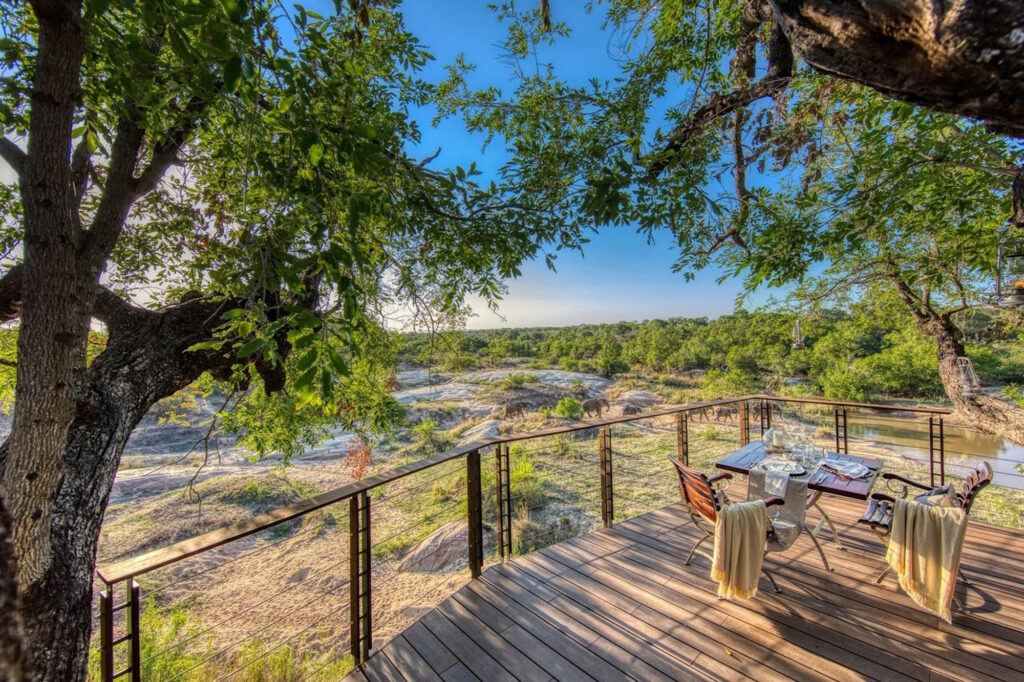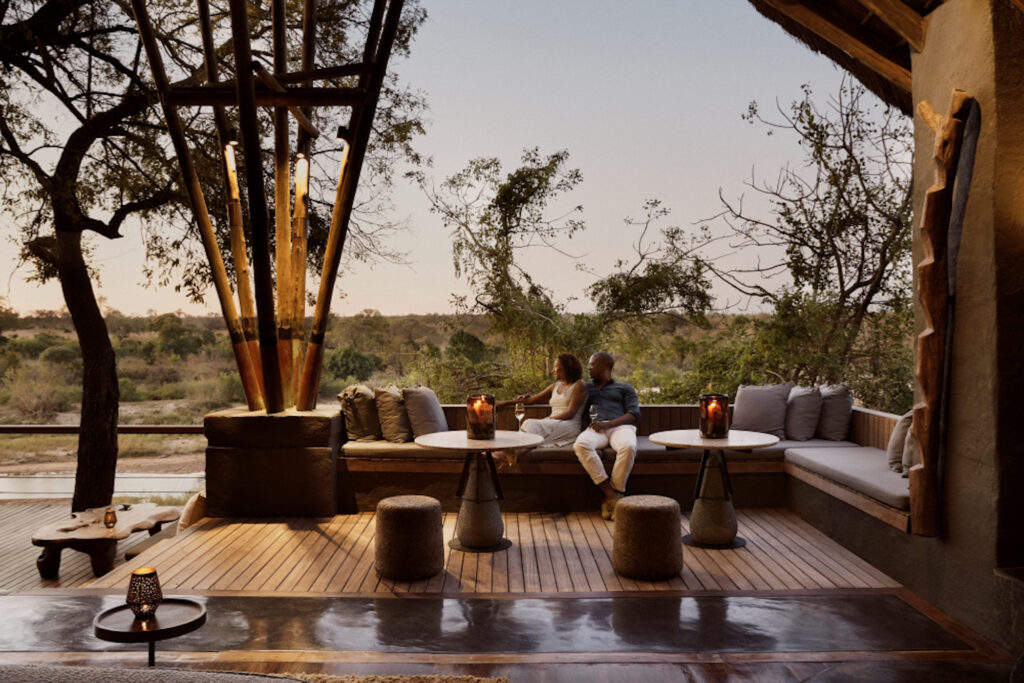
Kruger National Park, South Africa
Kruger’s wildlife: the 5 best areas to witness the big five
Southern Africa • See & do • Kruger’s wildlife: the 5 best areas to witness the big five
The best areas in Kruger to see the big five
Kruger National Park is one of the best places to see Africa’s iconic big five – lion, leopard, rhino, elephant and buffalo. But knowing where to find these animals can elevate your safari experience from average to unforgettable. With such a vast landscape, each area of the park has unique vegetation, offering prime habitats for different species. Planning your safari around these hotspots gives you a higher chance of catching these majestic creatures in action. In this article, we highlight the key zones in Kruger that are particularly great for finding each of the big five.

01
Skukuza to Satara
If you’re in search of lions, the road between Skukuza and Satara should be on your radar. This stretch cuts through open savannahs and grasslands, which are ideal hunting grounds for lions. The Satara Rest Camp is located in the heart of what’s often referred to as cat country, due to its high density of lions. With plenty of prey around, including zebras and wildebeests, you’re likely to catch a glimpse of lions on the move, especially during the early morning and late afternoon hours. We recommend sticking to waterholes like Nsemani Dam, where lions are known to drink and rest.
Skukuza to Satara
Mpumalanga
South Africa

02
Sabi Sands Game Reserve
Sabi Sands Game Reserve, adjacent to Kruger, is one of the best places to spot leopards in Africa. This private reserve is known for its dedicated guides and trackers who have an almost instinctive ability to find leopards, thanks to years of experience and understanding of the cats’ behaviours. Unlike in public parks, Sabi Sands allows off-road driving, which is key for getting close to elusive animals like leopards. During our visit, we were guided to a sighting of a female leopard relaxing on a rocky outcrop – a common behaviour for these solitary cats. The guides even pointed out her cub hiding nearby in the tall grass. This area is also home to all of the big five, but it’s the consistent leopard sightings that make this one special.
Sabi Sands Game Reserve
Mpumalanga
South Africa

03
Sabie River and Crocodile River
The Sabie and Crocodile Rivers are vital habitats for rhinos within Kruger National Park. These regions provide the perfect environment with plenty of water, mud wallows and thick bush cover – favourable for both white and black rhinos. The nearby Lower Sabie Rest Camp is a good starting point for exploring this area, where you might spot rhinos grazing along the riverbanks, often in the early morning . A visit to these river regions offers a moving glimpse into the lives of one of Africa’s most endangered species. These locations also offer excellent views of other river-dwelling animals like hippos and crocodiles.
Sabie River and Crocodile River
Mpumalanga
South Africa

04
Olifants River
There is a reason why this river is named after the elephants. Olifants “Elephants” River is a hotspot for elephant sightings. The river acts as a crucial water source, drawing in large herds of elephants, especially during the dry season. From the Olifants Rest Camp, you can look down onto the river and watch elephants moving in and out of the water, cooling off or crossing in groups. We spent hours just watching them interact – trunks spraying water and calves playfully wrestling while the adults watched over them. The panoramic views from the camp allow you to observe these massive animals without disturbing them, offering a more natural and authentic experience.
Olifants River
Limpopo
South Africa

05
Shingwedzi River
The Shingwedzi River area, located in the northern part of Kruger, is buffalo country. The combination of river access and vast grassy plains makes this an ideal spot for buffalo, which depend on these water sources, especially during the dry months. The Shingwedzi Rest Camp serves as a great base to explore this region, where you’re likely to see hundreds of buffalo moving through the riverbed, grazing or resting. Shingwedzi Rest Camp provides a great base for buffalo spotting, letting you explore the riverbanks where buffalo gather, often alongside impala and the occasional predator on the prowl. Just remember, buffalo don’t take kindly to close encounters, so keeping a safe distance is key!
Shingwedzi River
Limpopo
South Africa
Share this
Stay in the know
Sign up for the latest hotspot news from Southern Africa.







